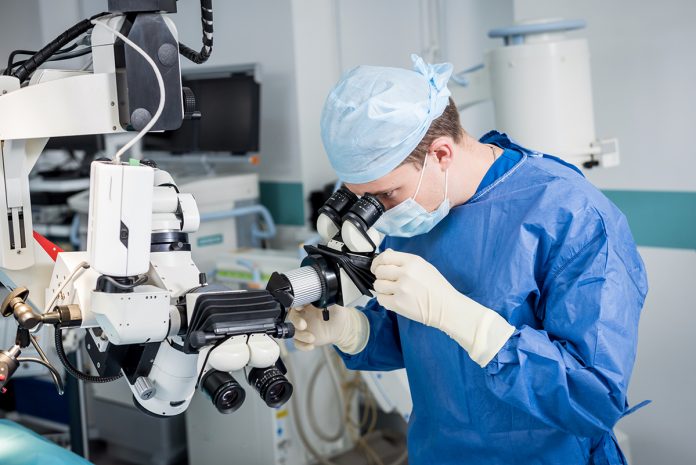Arun Swaminathan MD, Assistant Professor of Neurology and Epilepsy at the University of Nebraska Med Ctr, explores the need for improved access to epilepsy surgery
Epilepsy remains a highly prevalent condition with an estimated worldwide prevalence of 50-65 million people, based on the latest WHO estimates. Anti-seizure medications remain the first line of treatment for seizures and offer good seizure control in about two-thirds of patients. We are thus faced with a large patient population of one-third of epilepsy patients that need further intervention in addition to medications for seizure control, according to many studies (Kwan and Brodie, NEJM; etc.).
Surgery and neuromodulatory devices represent some of the most cutting-edge interventions offered for the achievement of seizure control in patients deemed refractory, after failure of achievement of seizure control using two or more appropriately chosen anti-seizure medications. Much research has been performed into the relative benefits and risks of these procedures in epilepsy patients. There is an ever-increasing amount of attention now being invested in improving availability and access to these advanced therapies to expedite the process of offering these therapies to economically and socially disadvantaged populations, especially since many of them have a higher probability of having epilepsy as compared to the advantaged upper strata of society.
Respective surgeries like temporal lobectomy were first offered in the early 1950s (Penfield, et al.). The scope of surgical resections has since expanded drastically to cover other lobes of the brain and to also involve other minimally invasive procedures like laser ablations or ultrasound ablations. Temporal lobectomies, in appropriately selected patients, can produce seizure freedom in 60-80% of patients with excellent seizure control up to 10-20 years after surgery (Wiebe, et al. NEJM. Jehi, et al.). Cognitive deficits tend to be minimal and do not significantly affect quality of life.
The financial advantages
The financial advantages from surgery are tremendous. Average annual cost of medications and regular care for seizure control in patients from most parts of the world ranges from $1,000 – $13,000 per year. Many patients are unable to maintain seizure control as they cannot afford treatment or do not have fixed income to pay for diagnosis or treatment.
Many patients in developing nations cannot pay more than $1 a month for their anti-seizure medications, forcing them to use historical medications that come with debilitating side effects. The cost of evaluation for epilepsy surgery across the world using multimodal investigations ranges from $1,200 – $10,000 while the cost of surgery itself ranges from $10,000 – $25,000.
Many studies have shown the one-time cost of pre-surgical evaluation and epilepsy surgery is significantly lower than the costs of lifelong therapy and medical complications. Moreover, surgery produces significant improvement in quality of life indices resulting in better social and financial prospects in many patients. There is also lower cost of medication due to lowered doses of anti-seizure medications after surgery resulting in cost savings to the patients and healthcare systems, especially over the lifetimes of patients.
Access to surgery
Cost is not the only limiting factor in epilepsy surgery. Availability and access play a major role as well. Developed nations report that many surgical candidates wait for a surgical evaluation or surgery for at least one to five years with many studies reporting an average wait time of four to 15 years, based on the nation and availability of epilepsy surgical centres.
Awareness of surgical treatment options and diagnostic tests among primary healthcare providers and patients is also limited and confounds the process by prolonging the time interval prior to a surgical evaluation or intervention. While many developed countries like the USA have multiple centres for surgical care, there is a significant shortage of surgical centres across many parts of Asia, Africa, and Latin America. Many of the developed countries still experience a delay in access to surgical care due to limited awareness and delays in referral from general neurologists and family practitioners.
Studies have shown that the costs of setting up an epilepsy surgical centre are quite reasonable, even in limited-resource settings, and can greatly improve care for epilepsy surgical patients. Many resource-limited nations can offer effective surgical evaluation and resection for reasonable costs ranging from $1,500 – $7,500 and thus offer high-quality care with excellent outcomes. Appropriately selected patients in resource-limited nations with obvious involvement of non-eloquent cortical regions do extremely well after a good quality evaluation and surgery (Jukkarwala, et al.). Developing nations can certainly offer good quality comprehensive evaluation for epilepsy surgery at a fraction of the cost spent in developed nations with proper utilization of resources (Tureczek, et al.).
Neuromodulation
Neuromodulation is a newer approach to epilepsy care that has been studied and offered for more than 25 years. Vagal nerve stimulation (VNS) is a relatively less invasive technique that involves the placement of an electrical device in the neck and chest to improve seizure control.
It is an intervention that can be offered to patients that may not be candidates for resection due to generalised epilepsy or involvement of eloquent cortex. Studies have shown good benefit in patients with improved seizure control as compared to medical management alone, with significant cost reduction noted due to fewer seizures, lower medication dosages and fewer complications. VNS therapy has been used in Europe since 1994 and in the U.S. since 1997 but has not achieved good penetrance in other parts of the world. Increasing VNS access would certainly enable better seizure control and improved quality of life in patients across the world at highly affordable costs.
Responsive neurostimulator therapy (RNS) and deep brain stimulators (DBS) represent the latest approaches in neuromodulation for epilepsy and are more likely to be offered in developed nations due to high costs of implantation and evaluation. Offering these modalities at affordable costs would greatly increase seizure control and quality of life in many patients worldwide, especially in those patients that may not be viable candidates for other surgical procedures.
Epilepsy surgery is a proven intervention for improving seizure control and quality of life in many patients and would greatly transform the socio-economic impact of epilepsy worldwide. Improving availability and affordability of epilepsy surgery for patients worldwide should be a major priority for all healthcare systems.
Please note: This is a commercial profile
© 2019. This work is licensed under CC-BY-NC-ND.








